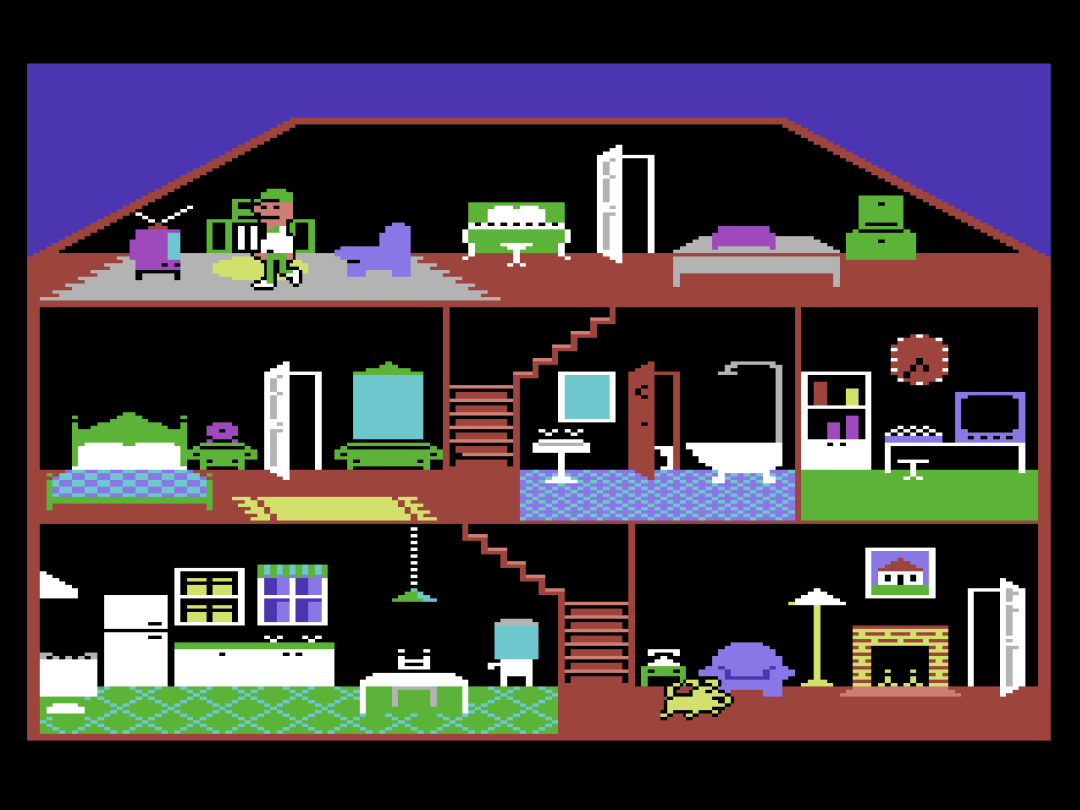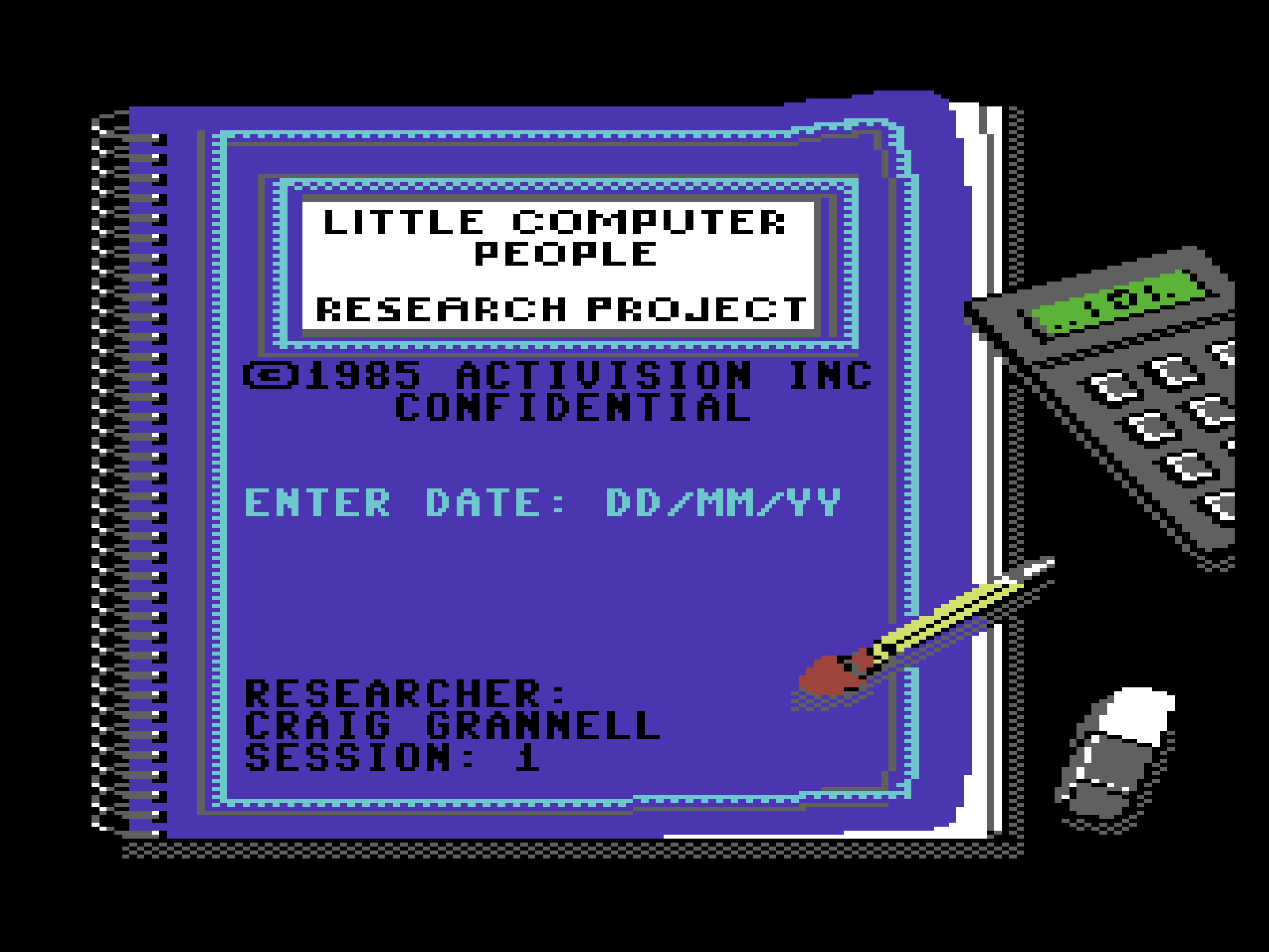How Little Computer People combined The Sims, Tamagotchi and Siri – in 1985
A house on a disk – and a bucket of snark in a pet person

Mid–1980s gaming often lacked sophistication and nuance. Many titles were arcade fare – lurid sprites belting about as grating audio assaulted your eardrums. But now and again, you got a glimpse of the future, such as when you first clapped eyes on Little Computer People.
Described at the time as a ‘house on a disk’ and a ‘research project’, the conceit was tiny people lived inside and ran every computer. With enough incentive, one might be coaxed from their happy home among all the circuitry and chips.
The result was a proto-Sims mixed with Tamagotchi, and what we’d now recognise as the kind of rudimentary AI we enjoy on smartphones. Little Computer People wasn’t merely about observation, you see, but also interaction.
Home sweet home
My own little computer person (LCP) was called Thomas. He took his sweet time to show up at the house that had appeared on the screen after the game loaded. He briefly looked around, brought in his tiny dog that toddled about and made farting noises, and plonked himself in front of the telly. He looked happy with his lot.
And why not? Every little computer person got to live, rent-free, in a palatial three-storey home that must have made older players green with envy. As I soon found out, though, you could turn an LCP green, too.
Interaction with LCPs happened by typing requests or using key commands to perform actions like delivering food. When left alone, an LCP would go about their business, eating, drinking, and eventually running out of food if you, say, happened to be out at a party.
On my return, hours later, I found Thomas in bed, his skin the shade of avocado. The cupboards were bare. And because progress was saved, this couldn’t be fixed by ‘turning it off and on again’. To my parents’ bafflement, I then spent a while nursing a tiny digital person back to health.
Poker face

There’s probably a lesson in there somewhere, although it’s unlikely Little Computer People was concerned about infusing good habits. In all the time I interacted with Thomas, he had precisely one shower, although he frequently spent plenty of quality time in the toilet. Also, he had a gambling problem. He’d incessantly bang on the inside of the screen and demand I play poker.
If I refused, he’d stomp upstairs, bash out a terse missive on his typewriter about “being ignored”, and then proceed to ignore me. I’d then try to bribe the little sod with new records, and pats on the head from an extendable arm that could be triggered from a spot near a downstairs armchair. Eventually, he’d come around – and then demand to play poker again.
It’s alive

If this sounds like I’m reminiscing about an old friend (or a drunk uncle), that’s kind of how playing this sort-of game felt. Little Computer People was an oddly human experience – the first of its kind, in an era of gaming where personality had until then meant the odd quippy response in a text adventure.
But every copy of Little Computer People was unique – a serial number system defined each LCP’s personality and appearance. No two were alike – your LCP was yours alone.
Today, we’re used to snarky technology that wants to give the impression it’s alive, micro-managing households of videogame people, and keeping tiny virtual pets alive. But Little Computer People got there first, over 30 years ago.
The one surprise, perhaps, is it’s never been remade. I don’t have any use for a house on a disk these days, but I’d love one on my phone. Perhaps dial down the poker though.



